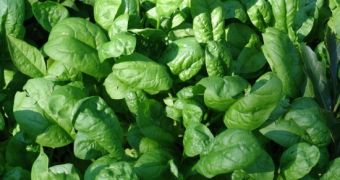Ever since the first solar panels first came into being, researcher have been doing their best in trying to boost the efficiency of photovoltaic systems so as to make sure no precious amounts of sun power get wasted simply because available technologies fail in making the most out of this renewable energy source.
Besides modifying photovoltaic installations in such ways that they track the sun's movements trough the sky, or having robots twist and bend solar panels for the very same purpose, it seems that the sun power industry might soon get some help from a rather common vegetable: spinach.
Business Green informs us that a team of researchers working with the Vanderbilt University in Tennessee has recently published a new study stating that a protein found in spinach is highly efficient when it comes to turning light into energy, and can therefore be used to create a new type of solar cell.
As they explain, what need be done in order to achieve this is to take silicon, which is already part-and-parcel of your average solar panel, and combine it with the aforementioned protein, officially known to science as PS1.
According to the same source, scientists worldwide first realized that putting together silicon and PS1 could increase the efficiency of existing solar panels about 40 years ago, yet until now no major breakthroughs have been made in terms of getting from theory to practice and coming up with results one could show off to his/her fellow researchers.
The same source informs us that the biohybrid solar cells developed by this team of scientists are about 2.5 times more efficient than previous prototypes working on the same principles.
“People are trying to get around limitations in semi-conductors with fancy, multi-element devices. But molecular biology is a better known game than these complicated multi-element inorganics. Our components are also non-toxic [and] they literally grow on trees,” said professor David Cliffel.
Although the photovoltaic technology presently available on markets worldwide still surpasses these biohybrids in terms of power generating capacity, professor David Cliffel believes that at one point in the future such innovative solar cells will give current PV installations a run for their money.

 14 DAY TRIAL //
14 DAY TRIAL //